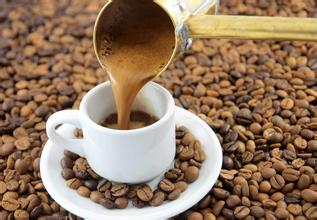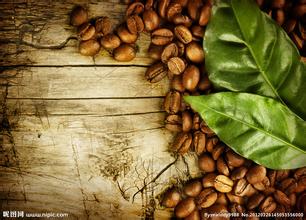Description of Panamanian Coffee Flavor introduction to manors in growing areas of boutique coffee beans
Panama Coffee is known for its summertime of Emerald Estate, and Emerald Estate is also known for its Boquete region in Chiriqui province. Boquete is a town of Chiriqui in the province of Riquí, located near the border between Panama and Costa Rica, close to the famous Baru volcano, beautiful scenery, rich soil, climate and soil very suitable for producing high-quality coffee.
There are many excellent estates distributed in the Boquet producing area. In addition to the famous Emerald Estate, there are also Elida Estate, Akaba Estate and other famous estates, all of which produce high-quality coffee. This is due not only to the excellent ecological conditions of Panama's Poquet region and the fertile volcanic ash soil of the Baru volcanic field. Another important factor is that the microclimate in the Poquet highlands of Panama is a unique and important resource for fine coffee in the Poquet region; this is the environment of Panama from east to west, which allows cold air currents to converge above 6500 feet through the Central Mountains, thus creating a variety of microclimates in the Poquet region, making its temperature and rainfall very suitable for plant growth, so coffee trees grown here are in good condition.
In such a unique planting environment in Poquet, naturally there will not be only such a jade rose summer, regardless of flavor quality and value of coffee king will be expensive; but every day to drink rose summer I think it is more extravagant, and even if there is no economic pressure, it is not like eating shark fin bear paw every day. The same is true of coffee, dabbling in a wide range, in order to enjoy the fun of coffee taste.
Then in the land of Poquet, there is a bean with a particularly high cost performance. And has a very beautiful name-flower butterfly. She has 40% high-quality rosewood pedigree, consisting of three varieties of rosewood, cadura and caduai. She is planted in the Baru volcanic area of Poquet and grows in the volcanic area at an altitude of 1600 meters. The treatment plant adopts fine washing treatment. Panama's special microclimate leads to abundant rainfall in this area and a large temperature difference between day and night. In addition, the volcanic soil unique to volcanic areas, as well as meticulous harvesting and fine treatment, make this coffee in terms of thickness, acid, The flowers are excellent. In 1931, it was exported from Geisha Mountain in southwest Ethiopia to Kenya, Tanzania and Costa Rica. In the 1960s, it was transplanted to Panama. After nearly half a century, it was amazing. It defeated the ever-winning varieties such as Boben, Kadulla, Kaduai and Tibika, and won the first prize in the 2005, 2006 and 2007 Panama National Treasure Bean Cup. In 2007, the International Famous Bean Cup sponsored by the American Fine Coffee Association (SCAA) won the championship again, and the bidding price was sold at 130 US dollars per pound, setting a record for the highest price in the history of competition beans. It is reported that the subsequent Panama National Treasure Bean Competition will be divided into two groups: Rose Summer and Non-Rose Summer, so as not to be robbed of the glory of other varieties by Rose Summer. Guixia is a member of the Tibika family, but after leaving Ethiopia for more than 70 years, he has become famous. Moreover, Ethiopia is a treasure trove of Arabica genes. Any donation of a variety abroad is enough to make waves in the coffee market.
Guisha is cultivated in many parts of the world and is the new king of fine coffee. Panama, Guatemala, Colombia and other Latin American countries have higher quality and high price.

Important Notice :
前街咖啡 FrontStreet Coffee has moved to new addredd:
FrontStreet Coffee Address: 315,Donghua East Road,GuangZhou
Tel:020 38364473
- Prev

Characteristics of Antigua Flower God Coffee beans in Guatemala-introduction to a series of flavor descriptions of manor producing areas
Volcanic soil, high altitude, humid and rainy climate, and active volcanic activity have created the unique geographical conditions of the Farahan Plateau. The Pacaya volcano in the region is the most active of the three still erupting volcanoes in Guatemala, leaving the Farahan Plateau often shrouded in a thin layer of dust and providing plenty of minerals for the soil of the Farahan Plateau. When the coffee beans are dried
- Next

Introduction to the description of the characteristics and flavor of Tanzanian coffee
The eastern coastal areas and inland lowlands of Tanzania have a savanna climate, while the western inland plateau has a tropical mountain climate, with an average temperature of 21-25 ℃ in most areas. More than 20 islands in Zanzibar have a tropical maritime climate, hot and humid all the year round, with an annual average temperature of 26 ℃. [6] rainfall types can be divided into bimodal distribution and unimodal distribution. Areas with double bee distribution of rainfall include
Related
- Detailed explanation of Jadeite planting Land in Panamanian Jadeite Manor introduction to the grading system of Jadeite competitive bidding, Red bid, Green bid and Rose Summer
- Story of Coffee planting in Brenka region of Costa Rica Stonehenge Manor anaerobic heavy honey treatment of flavor mouth
- What's on the barrel of Blue Mountain Coffee beans?
- Can American coffee also pull flowers? How to use hot American style to pull out a good-looking pattern?
- Can you make a cold extract with coffee beans? What is the right proportion for cold-extracted coffee formula?
- Indonesian PWN Gold Mandrine Coffee Origin Features Flavor How to Chong? Mandolin coffee is American.
- A brief introduction to the flavor characteristics of Brazilian yellow bourbon coffee beans
- What is the effect of different water quality on the flavor of cold-extracted coffee? What kind of water is best for brewing coffee?
- Why do you think of Rose Summer whenever you mention Panamanian coffee?
- Introduction to the characteristics of authentic blue mountain coffee bean producing areas? What is the CIB Coffee Authority in Jamaica?

